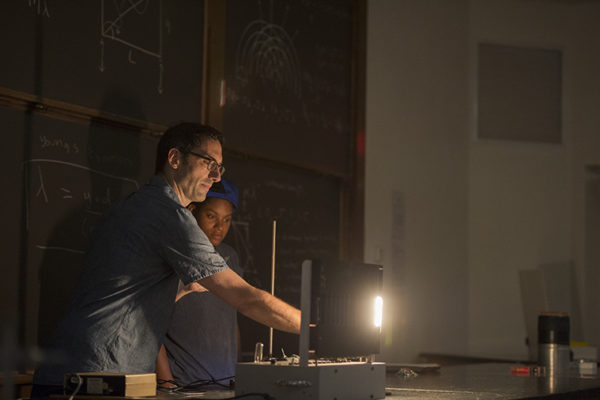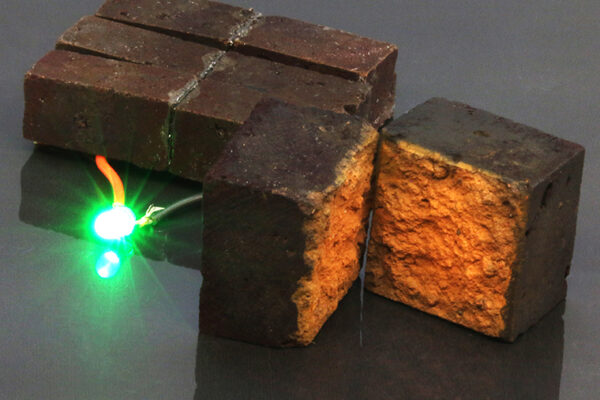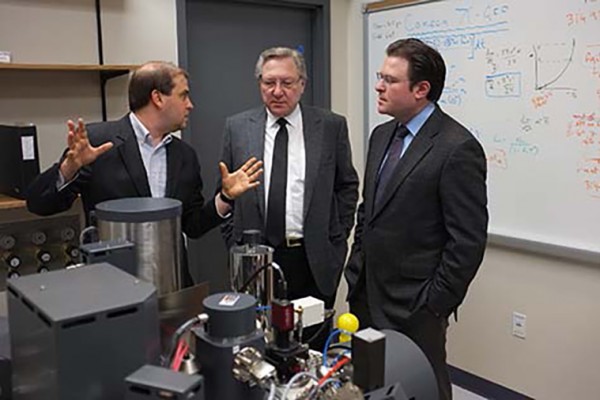Henriksen lands CAREER grant to chase electron effects
The behavior of electrons determines the fundamental properties of any material, such as its ability to conduct electricity. Erik Henriksen, assistant professor of physics in Arts & Sciences, takes advantage of strange-but-true qualities of graphene to search for correlated motion of electrons.
Storing energy in red bricks
Red bricks — some of the world’s cheapest and most familiar building materials — can be converted into energy storage units that can be charged to hold electricity, like a battery, according to new research from chemists in Arts & Sciences.
SIMS laboratory dedicated
Last week, the university dedicated the Grossman Family SIMS Laboratory in Rudolph Hall. The build-out of the lab was funded by a gift from the family of WUSTL alumnus Matthew Grossman. The space houses a state-of-the-art secondary-ion mass spectrometer that will be used primarily for the analysis of geological samples but also will be available to members of the newly founded Institute of Materials Science and Engineering to study problems in the analysis and design of materials.
The holidays come early for WUSTL scientists
A large wooden crate was delivered to the Compton Hall loading dock last week, direct from Paris. The crate contained a fabulous new instrument that WUSTL scientists say will transform their ability to approach problems in geology, biology, space science, engineering and materials science with new precision. Called the Cameca SIMS ims7f-geo, it is a state-of-the-art secondary ion mass spectrometer, one of only three in the world.



